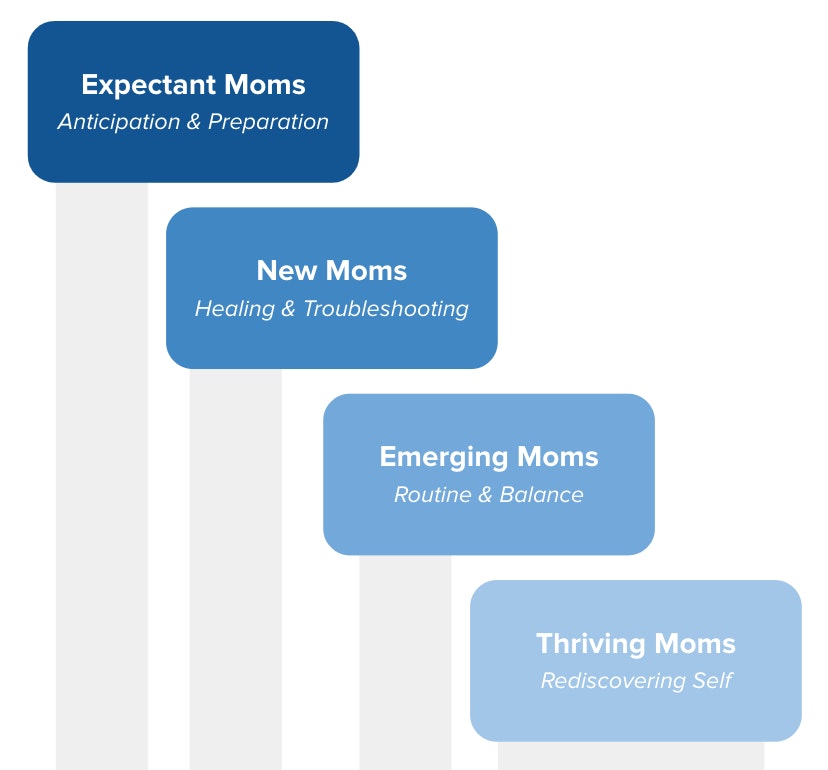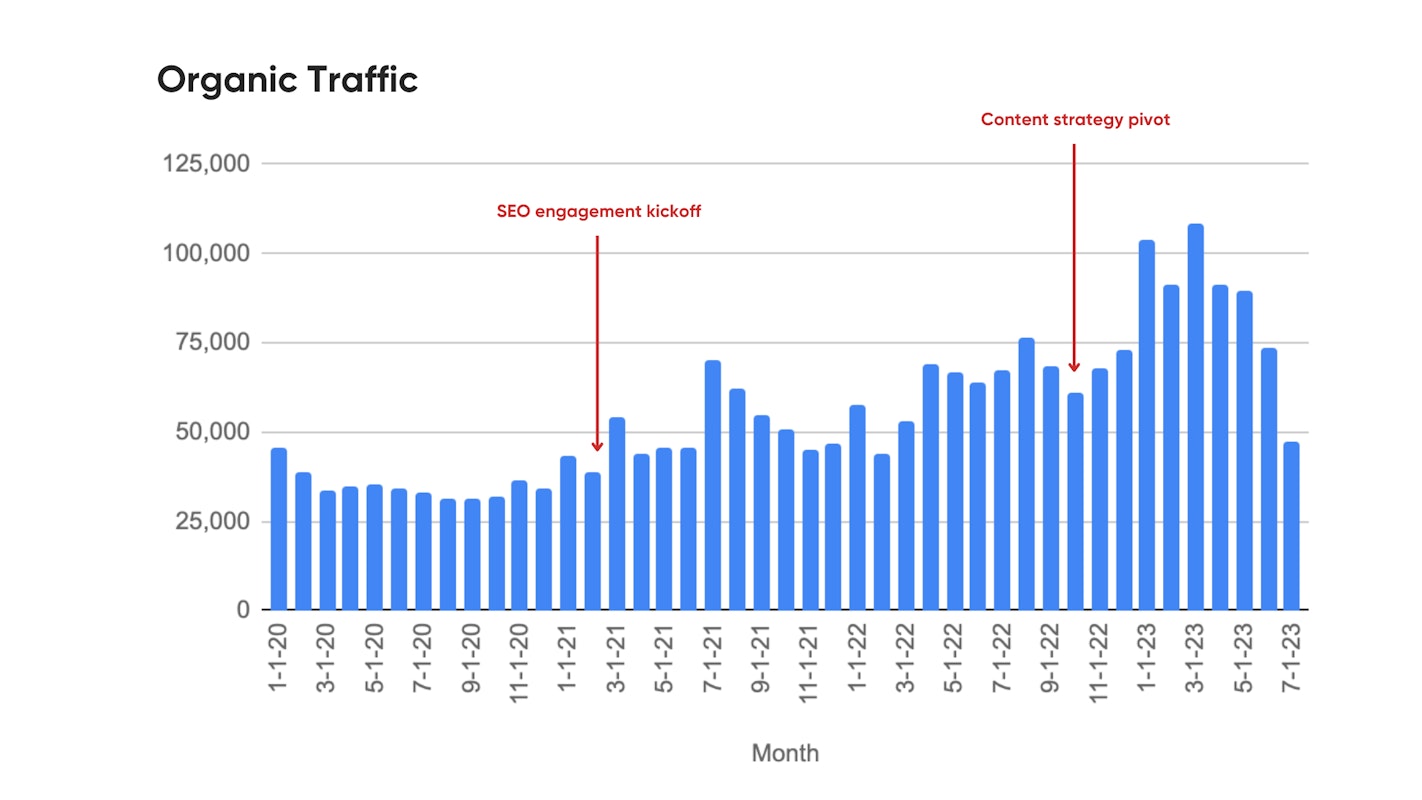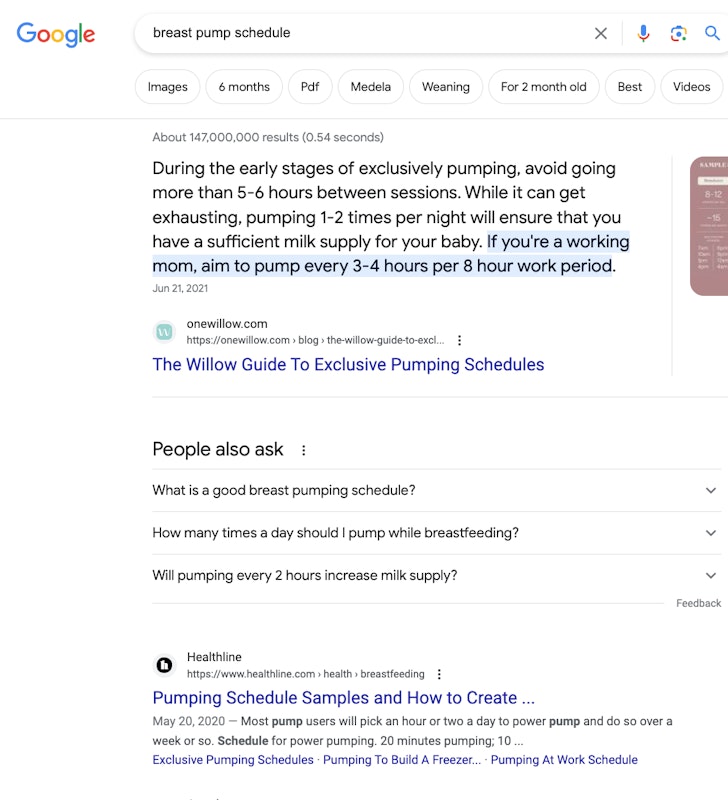Table of Contents
There's a reason they call moms superheroes. Being a mom is painful, exciting, exhausting, overwhelming, and the list goes on.
Our client Willow Pump makes the day-to-day of new moms just a little bit easier. With wireless, wearable breast pumps, they provide complete mobility while pumping.
Content was a crucial part of our search strategy to capture new audiences and drive conversions. Over time, we saw a need for content that better aligned with the Willow mom's journey.
While our blog articles were driving traffic, there was an overwhelming amount of content hubs to tackle. Instead of blindly taking a stab at hubs we thought were most viable, we pivoted to a human-first content strategy to create the empathetic and valuable content that Willow moms deserve.
In this case study, we'll walk through why human-first content is more important than ever in the new era of search. Then, we'll walk through the tactics we used to pivot our strategy, and how it led to a 52% increase in organic blog revenue over the past year.
Why Writing for Humans and Search Engines Is Important
Creating content for both humans and search engines is an important part of our strategy with Willow Pump. Let's take a look at why human-first strategy matters in the new age of search.
Search Volume Isn't the Only Source of Truth
Search volume should only be one part of the equation when it comes to deciding which topics to publish. It's a useful signal for seeing monthly search trends, but without a human-focused strategy, you'll have a hard time knowing what your audience is searching for.
With Willow Pump, the keyword opportunities were endless. We wanted a way to categorize our topics so that we could prioritize each based on what Willow moms were searching for.
To identify what the Willow audience was looking for, we prioritized these tactics:
- Held content brainstorms with client SMEs
- Got access to customer research and data
- Interviewed real Willow moms about pain points
- Researched audience seasonality trends
More on that later!
Human-First Content Converts
At the end of the day, we're creating content for real people. As SEOs, it can feel enticing to chase metrics like traffic and keyword rankings. But metrics like conversions and revenue are signals that the content is resonating.
If your content is speaking to your audience and their needs, there's a higher chance of it converting. Taking a human-first approach is the first step in creating content that will resonate with people, and ultimately convert.
E-E-A-T Still Matters
With the rise of AI generative content, E-E-A-T is still relevant. E-E-A-T stands for Experience, Expertise, Authoritativeness, and Trust. While it's not considered a direct ranking factor, Google ranking algorithms use E-E-A-T principles for positioning sites in search results, so it's not something to ignore. You'll still want to create valuable and relevant content that can rank on the first page of Google. To improve your E-E-A-T, try adding first-hand experiences, expert reviews, testimonials and other signals.
We could write a completely different article covering our thoughts on SGE, but the fact of the matter is, there will always be a human behind every search bar. Creating landing spots for real humans will always be relevant, even if algorithms change.
How We Created a Human-First Content Strategy With Willow Pump
Building a human-first strategy requires several moving parts. Here's the formula we used to drive results for Willow Pump.
1. Identify Pain Points
Pain point-SEO is a great way to speak to the needs of your audience and potential customers. With this approach, you can identify and target specific customer pain points and FAQ's through different types of content to lead them towards a buying decision.
With Willow Pump, we knew that there were a wide variety of pain points associated with being a new mom. From pregnancy announcements to pumping schedules, baby health to postpartum depression, the sky was the limit for topics to address.
But, we needed to identify pain points that were unique to the Willow mom. How did we do it? By holding content brainstorms and digging into the data.
Hold Frequent Content Brainstorms
Before starting your keyword research, you'll want to hold content brainstorms with relevant stakeholders who know the audience and product like the back of their hands.
Even after you build your initial content strategy, continue to schedule these brainstorms at least twice a year. With Willow, we hold content brainstorms 1-3 times throughout the year with their team. These content brainstorms consist of 30 minute - 1 hour long check-ins with our primary contact and relevant stakeholders. Potential stakeholders include:
- Customer service representatives
- Sales representatives
- Brand and content managers
- If you're lucky, customers!
With Willow, we typically keep our questions focused on the audience. Questions are always curated based on the types of content we're creating. Examples of questions include:
| Question | Purpose |
| What questions do you most often hear about the brand and product? | This is a great question for CX teams that work directly with customers. In the past this has been a way for us to identify new bottom-funnel, brand specific topics. |
| Where are people most often interacting with your brand and product? | Ask this question to gain a better understanding of your audience's behavior. If they're active on one channel, can we cross-promote content there? Are there discussions we can tap into on those channels? |
| What are the pain points you are trying to solve for your audience this year? | Identify pain points through content brainstorms, and align on which ones are priority for your strategy. |
| Why are people searching for [topic]? What information are they looking for? | Ask this question in regards to a specific topic you've identified as a priority. This is especially useful for sharing additional information with writers. |
Through these meetings, we identified the need to become more aligned with the Willow mom. Enter the "Mom Journey."
Get Access to Customer Data and Messaging Decks
During your brainstorms, ask for relevant survey data and messaging decks. These can be powerful tools for understanding your audience on a deeper level.
The Willow team shared survey results with us that were extremely insightful. The data included answers from a few groups of moms at different stages of their pregnancy and postpartum journeys.
Through these surveys, the Willow team was able to identify distinct pain points within each journey stage. We selected which stages were most relevant to Willow's solution, and used these as a guiding light for our overarching content strategy.
2. Conduct Keyword Research, Mapped to Conversion Funnel and Audiences
Now that you have an idea of the pain points and questions you're answering, it's time to conduct keyword research.
With Willow, we knew we wanted to prioritize mid to bottom-funnel topics within the mom journey phases that were most relevant to the Willow customer.
In this case, the two stages we focused on were "Expectant Moms" and "New Moms."
Expectant moms are early in their pregnancy journey. They're likely feeling an overwhelming combination of excitement, fear, and anticipation. They're starting to prepare for baby, whether it's researching breastfeeding methods or Google-ing "what every pregnant woman needs."
New moms are in their first few months of postpartum. They're healing from childbirth, troubleshooting breastfeeding problems, and likely haven't gotten that much sleep.
We wanted to show up for both these moms who are looking for solutions like Willow to make their postpartum lives a little bit easier.

3. Plan Calendar Based on Audience Research & Trends
Through your stakeholder interviews and research, you may have identified seasonal trends for specific topics. These should be layered into your content planning and keyword research so that you meet the right audiences when they're searching.
We used keyword research tools to identify broad seasonal search trends across the Mom Journeys. We found that July through October are the most common birth months, and surprise, this was reflected in search volume data!
For our content calendar, we loosely planned New Mom content to be written and published in late winter/early spring. Then, we prioritized Expectant Mom topics in the fall/early winter.
By planning around seasonality, we were able to give trending topics a chance to index and rank, just in time for when moms were most likely to be searching for them.
4. Ask Experts to Review Content
For several of the articles we published, the Willow team had an internal Lactation Consultant review and edit the copy. We wanted to make sure our content was providing valid information alongside other high-authority sites. We also wanted to give the Willow mom peace of mind that our advice was accurate.

5. Address Technical Issues
The traffic growth we saw would not have been possible without addressing technical issues that were preventing our blogs from being found by search engines. We worked with the Willow team to implement fixes to ensure blogs were able to be crawled. This included creating blog category pages, and fixing a CMS issue that was causing URLs to randomly 404.
The Results: 52% Increase in Blog Revenue Y/Y
By implementing a human-first strategy, organic search is now Willow Pump's top-performing marketing channel by a landslide. By collaborating with the Willow team, we've been able to continuously identify new content opportunities that are aligned with highly specific mom pain points.
Increased Organic Traffic by 50% Y/Y
After pivoting our strategy and making an effort to solve technical issues, we were able to increase organic traffic by 50% Y/Y.

Increase in Organic Blog Revenue by 52% Y/Y
As a result of transitioning to content that aligned with mom pain points, we were able to increase blog revenue by over 50%. Intentional topic planning meant that our content started to resonate more with the people visiting it.
Unique Content That Stands Tall Against Competitors
Today, Willow Pump leads the charge in the organic space compared to breast pump competitors. We've established Willow Pump as a unique resource and solution that moms can turn to when they need it most.
Over time, we've been able to outrank high-authority sites like medical journals, resource hubs, and more.

Wrapping Up: The Power of a Human-Centric Approach
Creating content that resonates with readers will always matter, no matter the growth of AI and all of its capabilities. Need a place to start? Ask yourself, what are the pain points my audiences want to whisk away with a magic wand? Prioritize these pain points, back your strategy with data, and always stay flexible to seasonality and trends.
To learn more about how to drive results with human-focused search, book a call with Uproer today!

